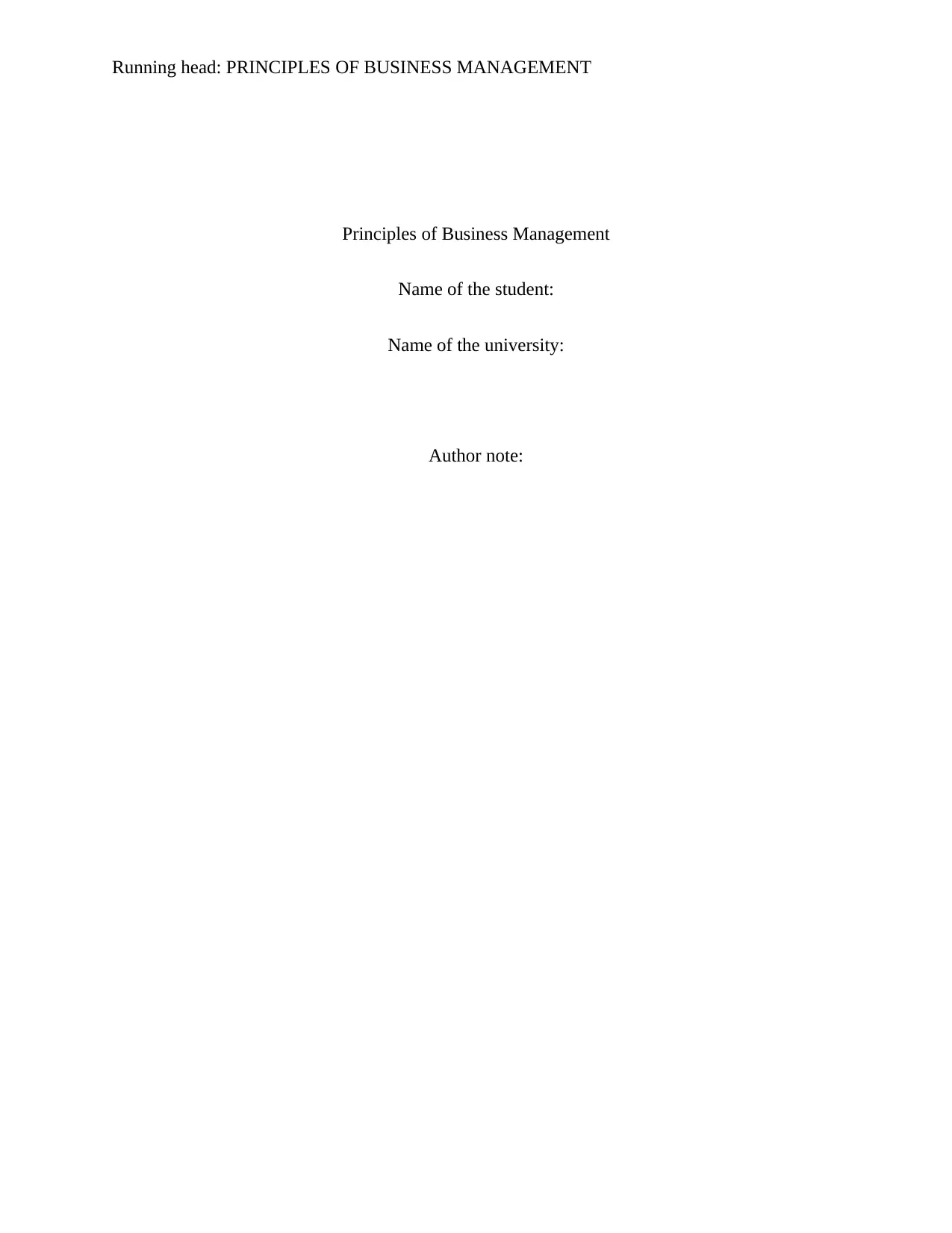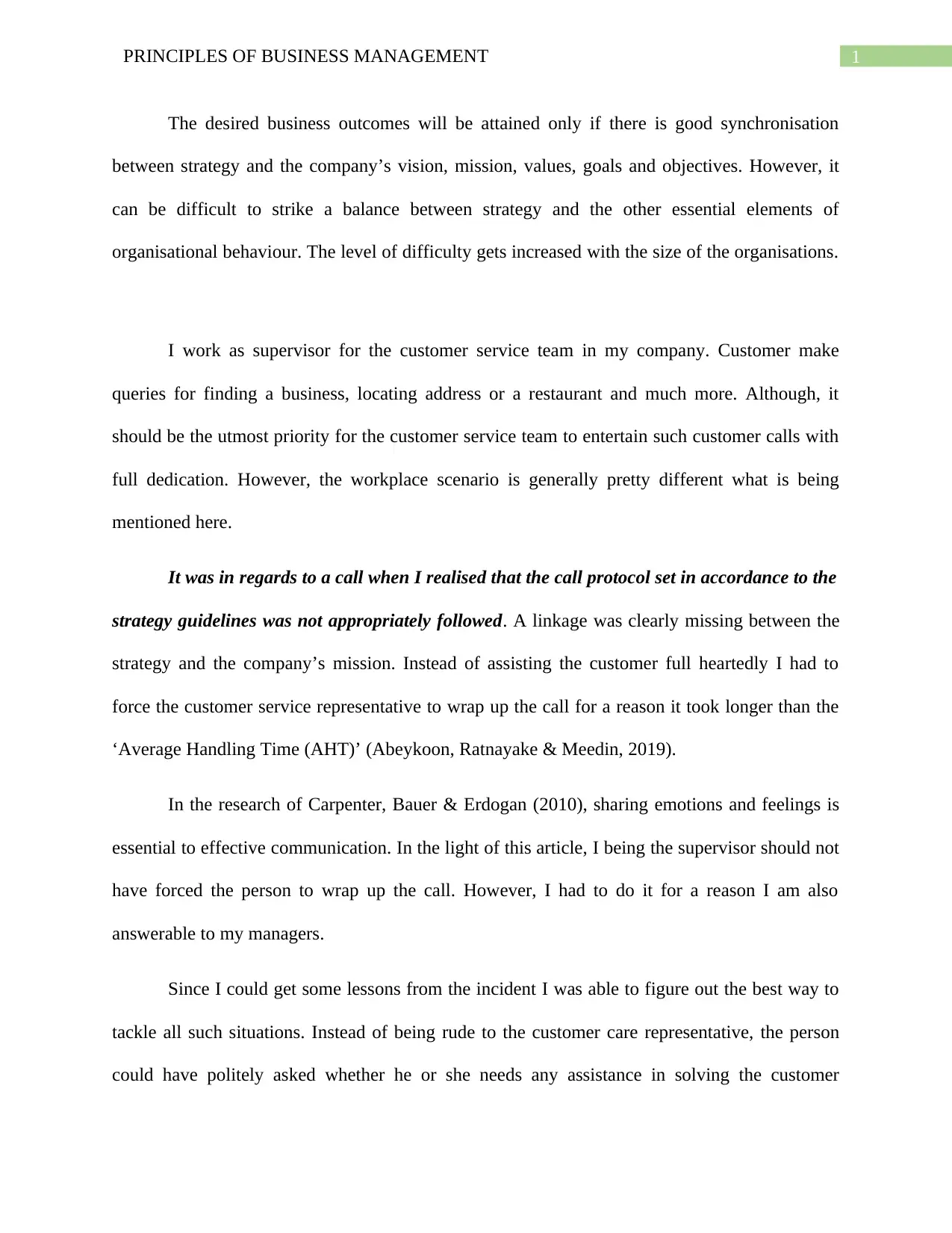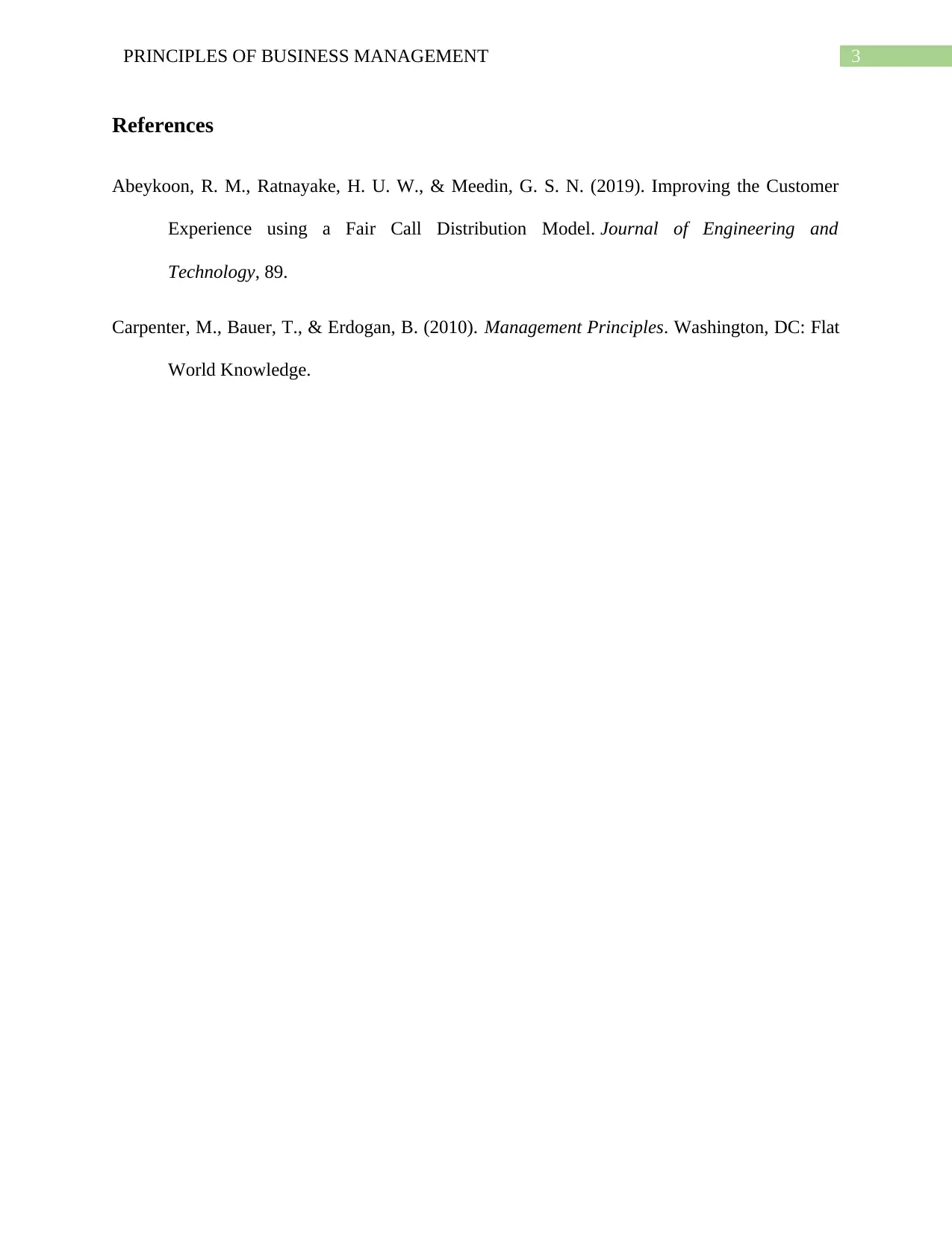Principles of Business Management: Linking Strategy and Mission
VerifiedAdded on 2022/08/12
|4
|473
|21
Report
AI Summary
This report analyzes the principles of business management, particularly focusing on the relationship between strategy, mission, and customer service within an organization. The author, a supervisor in a customer service team, reflects on a situation where the company's strategy, specifically the 'Average Handling Time (AHT)' metric, conflicted with providing excellent customer service. The report references research by Carpenter, Bauer & Erdogan (2010) on the importance of emotional intelligence in communication and Abeykoon, Ratnayake & Meedin (2019) on improving customer experience. The author discusses how the pressure to meet performance metrics led to a less-than-ideal customer interaction and proposes strategies to better align company strategy with its mission, vision, and values. The report highlights the importance of balancing operational efficiency with the need for empathetic and effective customer interactions.
1 out of 4











![[object Object]](/_next/static/media/star-bottom.7253800d.svg)